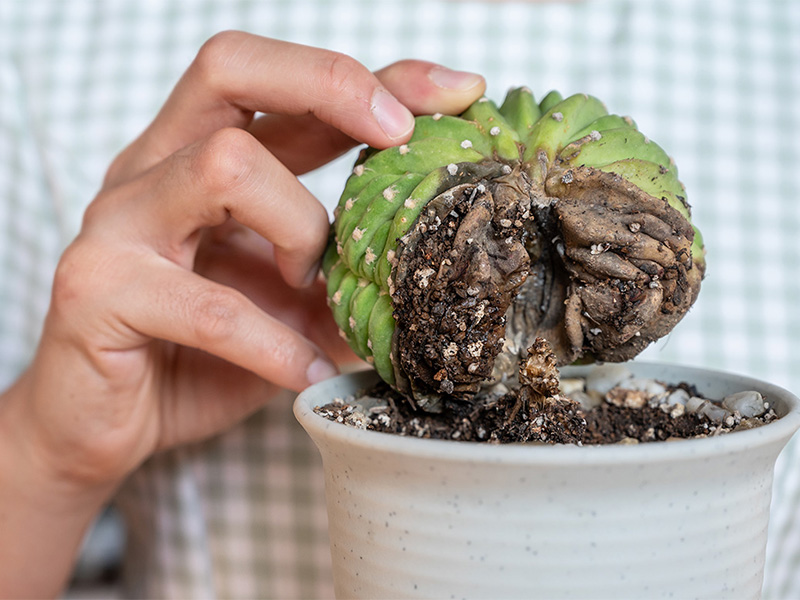Most cactus are best grown outdoors in filtered sun or on a bright patio while others can tolerate full sun. If the cactus gets too much sun it will sunburn, which results in a yellowing of the skin, progressing to a browning (killing) on the sunniest side. If this occurs, provide shade immediately using shade cloth rated between 30-60%. Interiors are usually too dark for good growth unless assisted by high-intensity grow lights.
It is completely false that cactus don’t need water. After all, they are composed primarily of water. What is true is that they require less water than violets but more than a rock. Water cactus when they are actively growing or wilting. Wilting appears as shrinkage of the plant or wrinkling of the surface. Most cactus grow actively in the spring and summer. Allow soil to dry between watering.
Fertilizing cactus planted in the ground is generally not necessary. However, cactus grown in containers will need to be fertilized periodically. Fertilize at least once every four weeks during the plant’s growing season. A complete, balanced fertilizer can be applied and apply at half strength of the label’s recommendation.
Cactus have few diseases and pests. Here are a few troubleshooting tips for the care of cactus.

Pointy heads in globular cactus or stringy narrow stems in others. Etiolation caused by too little light—provide more light.
Wilting, wrinkling, shrinkage: dry soil, needs water. If soil is wet, then roots have died due to overwatering—remove from damp soil. Remove rotted tissue to dry out, then re-root and transplant.
White cottony masses or white rice-like objects on plants: Cochineal scale or mealy bug—wash off with hard jet of water, or spray rubbing alcohol solution (3 parts water to 1 part rubbing alcohol) to the insects. If using rubbing alcohol solution do this in the early morning or at dusk. Inspect plant often to check for recurrence.

Very fine spider webbing on the spines and pin dots on stems: Red spider mite. Wash off the water and use overhead watering to prevent reoccurrence. Spider mites thrive in dusty conditions and dislike wet, moist conditions. Spider mites frequently become a problem after applying persistent insecticides such as carbaryl or pyrethroids. These insecticides are not very effective against mites and often kill off natural enemies and stimulate mite reproduction.
Large larvae (grubs) tunneling inside stems, large black adults feeding on tips of plant: Longhorn beetle—remove adults at dawn when they are most active. A hand-held vacuum cleaner works well.
Wet rot anywhere on the stem: Bacterial rot (Erwinia carnegieana)—Cut away all rotted tissue down to fresh, undiscolored tissue. Air dry. Do not fill in holes.
